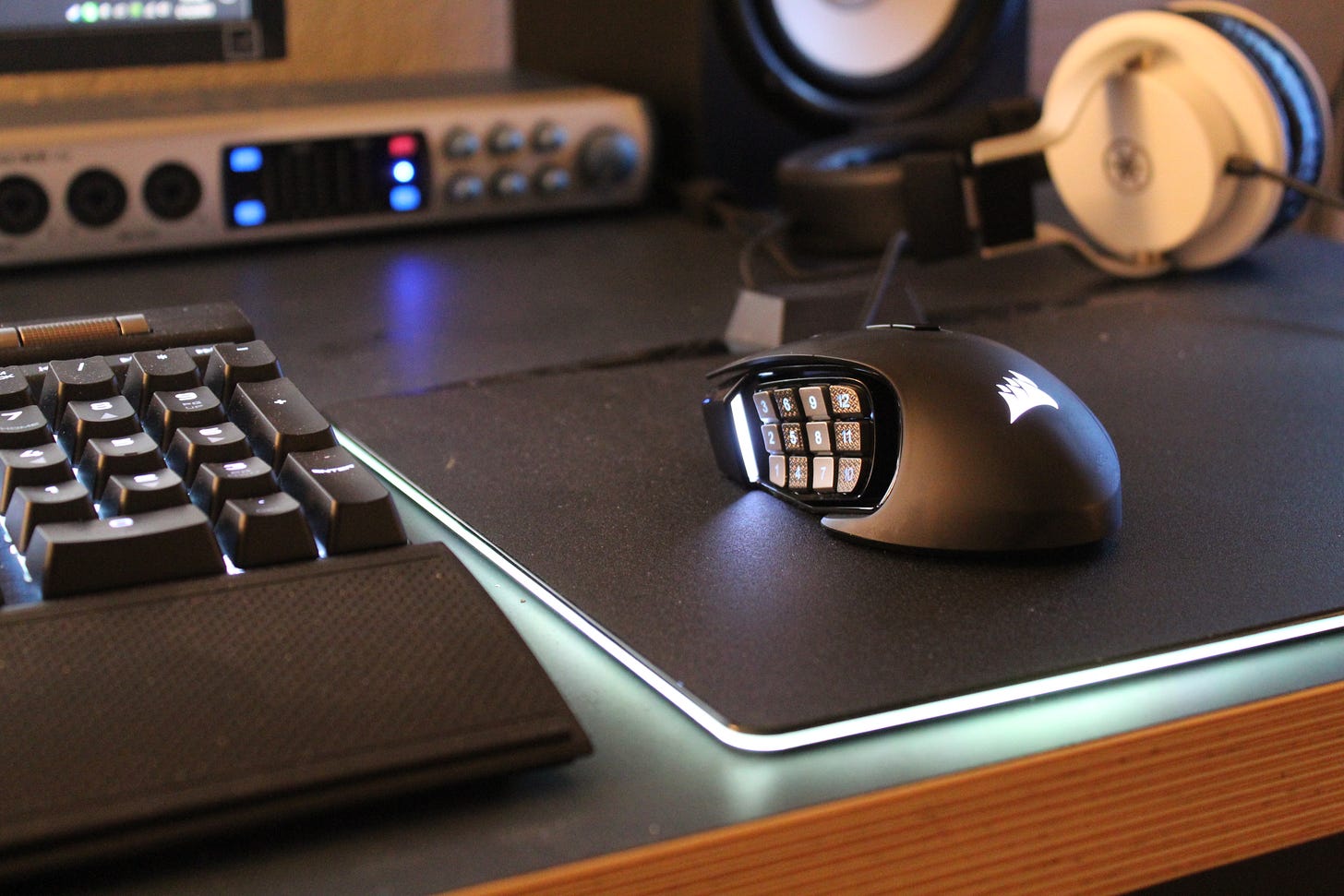Computer component and software summary
Advice often becomes tiresome on this topic. Maybe this instance can be an exception to that norm.
A goal:
To defy Mohr’s law, and exceed 3 years, extending to 5-6 years, before replacement of this computer’s hardware system main componentry.
Capable tools of hardware, software, and peripheral components, plus more seasoned newer treatments at internet online services and sellers, are beginning to allow me to more smoothly perform at a less halting-pace in a variety of inspired content creation techniques. Hardware for this is now more readily available, and is also less costly, than was the case just 5 years ago.
My favorite online computer hardware outlet
(link points to NewEgg.com)

My System Evolvements
High end air-cooling to replace former usage of water cooling, for me is much more cost effective, and also more enjoyably responsive via sound changes in common ‘Turbo’ fan modes, with ‘Silent’ also performing at very safe margins of system temperature for when the most quiet is desired.
12-core processors are a great compromise instead of the greater cost of 16-core processor packages.
I’ve been glad of selection of 128 Gigabytes of DRAM, as still mostly reasonable on my budgeting, and well worth the prominence placed on that componentry.
I chose Cooler Master brand ‘HAF 500’ for my chassis and case, based on less material heaviness, via ultimately less tempered glass, to not bear down the chassis carriage/carry weight too heavy.
Also, I removed all magnetic stripped dust filter panels. The top-of-chassis filter panel, by reasons of thermodynamics and aerodynamics, is the most effective filter panel to put aside for storage, and not have in place.
The Cooler Master brand chassis/case is reasonably visually appealing still, even with the top-of-case grating exposed, showing some readiness for fan or water cooler mounting points.
I am most recently greatly satisfied with an air cooler upgrade. This model I suggest to readers: the “Thermalright” brand assassin air cooling system. Temperatures lessened by 40°F across the various spectrums of BIOS settings and case/CPU fan tunings, by switching form the former AMD brand stock air cooler to the Thermalright brand air cooling system. The system snaps together well, and seems to have been designed for light-weight also, not placing side torsion on the channelboard when jutting sideways in tower configurations.
In earlier versions of this article, I suggested that the BIOS settings be adjusted to run the cores at published standard clock frequencies, and no speedier. At those earlier time frames, doing such was a reliever of near over temperature concerns when using stock AMD fan air cooling. Now with the Thermalright air cooling system installed, I’ve proceeded to use full AI overclocking optimization, to its fullest, though I still remain free of DRAM optimizations.
I have the application ‘CoreTemp 1.18’ run at startup, and minimize it early-on, after screen unlock or restart, at which closing accidentally performs a minimize nicely, anyway. I have it setup for overheat protective shutdown at 195°F within 20 seconds, and that’s the main use for it regularly by me.
ASUS brand X670E ROG Strix channelboard was selected for its great array of mainly in-place tried and proven types and total count of USB connections on the rear panel.
AMD brand Radeon 7600 model, as less costly than gamer station GPU’s, provides me a graphics processor unit more than ample at content creation and creator studio tasks.
Most importantly, 2+ copies of — HP 200 Pavilion Keyboard and Mouse — were acquired, the second extra made ready at home-office, to possess contingency readiness in case of spill or failure.
The keyboard and mouse are most important of all, to me. These are wired components and do not involve awkward unifying radio connection systems.
For some back and forward mouse capabilities, in the main I selected HyperX ‘Haste’ Pulsefire mouse, and not the ‘Surge’ mouse. The ‘Haste’ mouse is only minimally lit by RGB, in a manner less distracting than the ‘Surge’ model.
Finally, in more experimental modes, I ventured the HP 400 wired keyboard, again purchased as a pair of 2, for 1 extra in ‘closeted’ mode. The keyboard FN keys versus convenience keys mode selection was awkward at first, involving some pre-commitment to later days of fumbling with keys while learning.
The original HP 200 Pavilion package, which includes a good mouse - although without a back button for the thumb - is at the ready for failure contingencies.
Bonus suggestion: typing can be made more enjoyable and less awkward by aligning the keyboard portions — between the two Shift keys, left and right — as centering with the very center of the screen. That’s different from centering the entire keyboard.
The ideas is that the numeric keypad can be displaced to the right somewhat, closer to the mouse. This has the QWERTY keystroke work lined up better and is not skewing the arms reach as with some laptop layouts.





